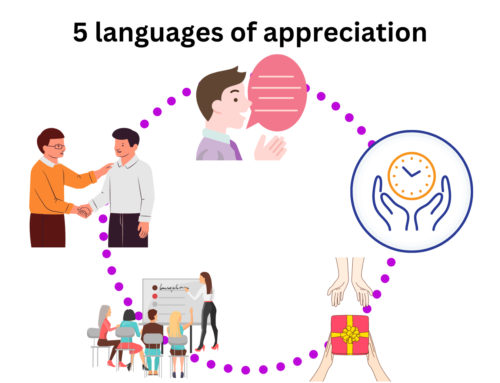“For the next five minutes, please try not to think about white bears.”
In 1985, Daniel Wegner, currently a psychology professor at Harvard University, started his first experiment about thought suppression with the sentence above. Paradoxically, the participants could not stop thinking about white bears! Wegner called this effect ironic rebound. The more we try not to think about something, the more this thought comes back. Common advice such as “Just don’t think about it,” might not be so helpful.
about thought suppression with the sentence above. Paradoxically, the participants could not stop thinking about white bears! Wegner called this effect ironic rebound. The more we try not to think about something, the more this thought comes back. Common advice such as “Just don’t think about it,” might not be so helpful.
Why the method of thought suppression does not work?
A command sent to the brain: “don’t think about something” is divided into two parts, which are fulfilled by two different brain systems. The first one is an operator, part of the mind, which will direct your attention toward anything other than the forbidden thought. Operator relies on the brain‘s system of self-control, and such as any types of self-control requires a large part of mental resources and energy. Second is a monitor, a part of your mind, which is looking for evidence whether you think, feel or do something what you don’t want to. Our mind monitors automatically with any great effort.
How does it work? Imagine, you go grocery shopping and do not want to buy any sweets. While the operator concentrates, plans and controls your behavior (operator: “I will get only bread and cheese. Where is the bakery section?”), the monitor scans environment and your mind for warning signals (monitor: “Danger, danger! Cookies on the left!”). If you have enough of mental resources, the operator can make a good use of the monitor’s hysteria. The monitor points out possible temptations and the operator saves you from giving in and directs you back toward the aim. The problem begins when the operator is exhausted and only the monitor is functioning, which is like the Energizer bunny and never stops. Since the monitor is looking for everything forbidden, it is broaden into your mind constantly. As a result you are primed to think whatever you are trying to avoid. “Cookies, cookies, cookies!” (“White bears!”)
Another problem arises: When you are trying to suppress the thought, and it keeps coming back into our mind, you are more likely to believe that it must be true. This is caused by availability bias, we judge the truthfulness of an information according to how easily we can recall it. The more the thought appears the more we believe it is true, otherwise it would not keep coming back and draw our attention.
What DOES work?
Give up! Paradoxically, when you give yourself permission to think about something, you are less likely to actually think about it. Allow yourself to think what is actually coming to your mind, allow yourself to feel emotions that are appearing –without necessarily believing that it is true, and without feeling compelled to act on it. The most suited are mindfulness techniques, which lie on cultivating the ability to focus on present moment without any biased judgment.
Philippe Goldin, neuroscientist from Stanford University, verified the effectiveness of this method. He taught people with social anxiety disorder observe and accept their thoughts and emotions. Functional magnetic resonance imaging (fMRI) revealed changes in brain activity before and after mindfulness training. After the training, the activity in the brain’s region responsible for visual information processing was higher; people were paying more attention to statements presented to them such as: “There’s something wrong with me.”, “People think I am weird.” Simultaneously, the activity of the stress center decreased. Even though they paid full attention to the negative thoughts, they were less upset by them. After the intervention, they felt less anxious overall, were spending less time criticizing themselves and worrying. When they stopped fighting against their thoughts and emotions, they felt more freedom from them.
When upsetting thoughts start to occupy your mind, it could be worries such as “What if something goes wrong?“, or self-criticism: “I can’t believe I did that. I am so stupid!”, they keep repeating in your head, as a catchy song and you can’t get rid of them, try mindfulness technique thought by Phillipe Goldin.
Mindfulness Technique
- Observe your thoughts. Notice whether the upsetting thought is somehow familiar. That is the first sign
 that the thought does not contain any critically important information, which you need to believe.
that the thought does not contain any critically important information, which you need to believe.
- Then shift your attention to your feelings in your body. Notice if there is any tension present in your
 body, or changes in your breathing, or heartbeat. Notice parts of your body where you feel the tension, in your gut, chest, throat, or anywhere else.
body, or changes in your breathing, or heartbeat. Notice parts of your body where you feel the tension, in your gut, chest, throat, or anywhere else. - After observing your thoughts and feelings, shift your attention to breathing. Notice how it
 feels to breathe in and breathe out. In some cases, the upsetting thoughts and feelings dissipate naturally by observing the breathing. When they start to interrupt your attention to the breath, continue further ahead.
feels to breathe in and breathe out. In some cases, the upsetting thoughts and feelings dissipate naturally by observing the breathing. When they start to interrupt your attention to the breath, continue further ahead.
- Imagine your thoughts and feelings like clouds passing through your mind and body. Continue
 breathing and imagine the clouds dissolving or floating around you. Imagine your breath as a wind, moving the clouds easily and dissolving them. There is no need the thoughts to disappear, just stay with the feeling of your breath.
breathing and imagine the clouds dissolving or floating around you. Imagine your breath as a wind, moving the clouds easily and dissolving them. There is no need the thoughts to disappear, just stay with the feeling of your breath.
The opposite of thought suppression is to accept their presence – not to believe them. This technique is not the same as ruminate over a thought. Accept the fact that thoughts come and leave and you can’t always control what thoughts come to mind. You don’t have to automatically accept the content of those thoughts. That is, Oh well, there is that thought again – worries happen. That’s just the way the mind works, and it doesn’t necessarily mean anything.” You are not telling yourself: “Oh well, I guess it’s true. I am a terrible person and terrible things are going to happen to me, and I guess I need to accept it.”
The same method can be used for any upsetting thoughts or unpleasant emotions such as nervousness, anger, jealousy, anxiety, fear or sadness.
8.3.2015, Pavla Bělostíková, Mater of Human Decision Scince
References:
Goldin P.R., Ramel W. & Gross J.J. (2009). Mindfulness Meditation Training and Self-Referential Processing in Social Anxiety disorder: Behavioral and Neural Effects. Journal of Cognitive Psychoterapy 23, 242-57.
McGonigal, K. (2011). The Willpower Instinct: How Self-Control Works, Why It Matters, and What You Can DO to Get More of It. Penguin.
Tversky A. & Kahneman (1973). Availability: A Heuristic for Judging Frequency and Probability. Cognitive Psychology 5, 207-32.
Wegner, D. M. (1994). White Bears and Other Unwanted Thoughts: Suppression, Obsession, and the Psychology of Mental Control. New York: Guilford.
www.calicoscottage.info




